
The aperture is an opening in certain kinds of mollusc shells: it is the main opening of the shell, where the head-foot part of the body of the animal emerges for locomotion, feeding, etc.
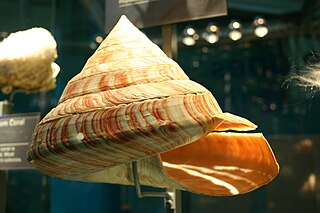
Pleurotomariidae, common name the "slit snails", is a family of large marine gastropods in the superfamily Pleurotomarioidea of the subclass Vetigastropoda. This family is a very ancient lineage; there were numerous species in the geological past. The genus includes several hundred fossil forms, mostly Paleozoic. It is one of the oldest gastropod families, commencing in the Cambrian.

Perotrochus is a genus of large sea snails with gills and an operculum, marine gastropod mollusks in the family Pleurotomariidae, the slit snails,.
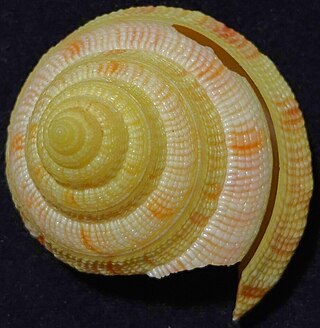
Entemnotrochus rumphii, common name the Rumphius' slit shell, is a species of large sea snail with gills and an operculum, a marine gastropod mollusk in the family Pleurotomariidae, the slit snails.
The Anomphalidae is an extinct family of fossil sea snails, marine gastropod mollusks. These are archaeogastropods which are included in the suborder Trochina. The Anomphalidae lived during the Paleozoic, from the Silurian to the Middle Permian. According to some authorities these snails belong instead to the Euomphalacea.

Conus sunderlandi is a species of sea snail, a marine gastropod mollusk in the family Conidae, the cone snails and their allies.
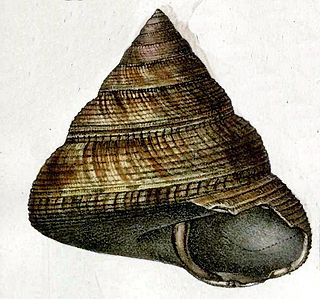
Mikadotrochus beyrichii, common name Beyrich's slit shell, is a species of sea snail, a marine gastropod mollusk in the family Pleurotomariidae.

In the shell of gastropod mollusks, the lip is the free margin of the peristome or aperture of the gastropod shell.

Perotrochus atlanticus is a species of sea snail, a marine gastropod mollusk in the family Pleurotomariidae.
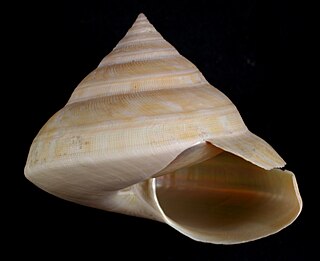
Bayerotrochus tangaroanus, or Tangaroan slit shell, is a species of sea snail, a marine gastropod mollusc in the family Pleurotomariidae.

Bayerotrochus teramachii, is a species of sea snail, a marine gastropod mollusc in the family Pleurotomariidae.

Bayerotrochus westralis, commonly known as "Australia's split shell", is a species of sea snail, a marine gastropod mollusk in the family Pleurotomariidae.

A selenizone is an anatomical structure that exists in the shells of some families of living sea snails: the slit shells, the little slit shells and the abalones, which are marine gastropod mollusks from ancient lineages.

Gibbula tryoni is a species of sea snail, a marine gastropod mollusk in the family Trochidae, the top snails.

Callistele calliston, common name the beautiful top shell, is a species of sea snail, a marine gastropod mollusk in the family Trochidae.

Perotrochus quoyanus is a species of large sea snail, a marine gastropod mollusk in the family Pleurotomariidae, the slit snails.
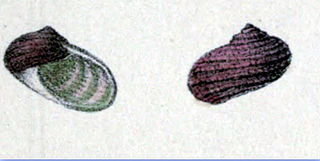
Stomatolina sanguinea is a species of small sea snail, a marine gastropod mollusk in the family Trochidae, the top snails.

Halystina umberlee is a species of very small deep-water sea snail, a marine gastropod mollusc in the family Seguenziidae.

Conus binghamae is a species of sea snail, a marine gastropod mollusk in the family Conidae, the cone snails, cone shells or cones.
Eucithara hirasei is a small sea snail, a marine gastropod mollusk in the family Mangeliidae.


















